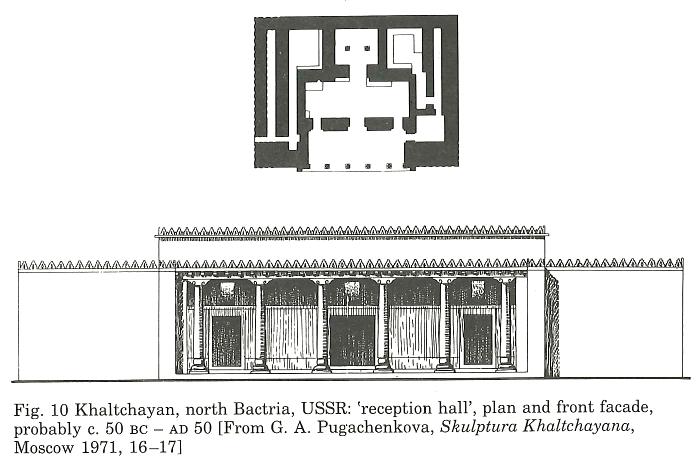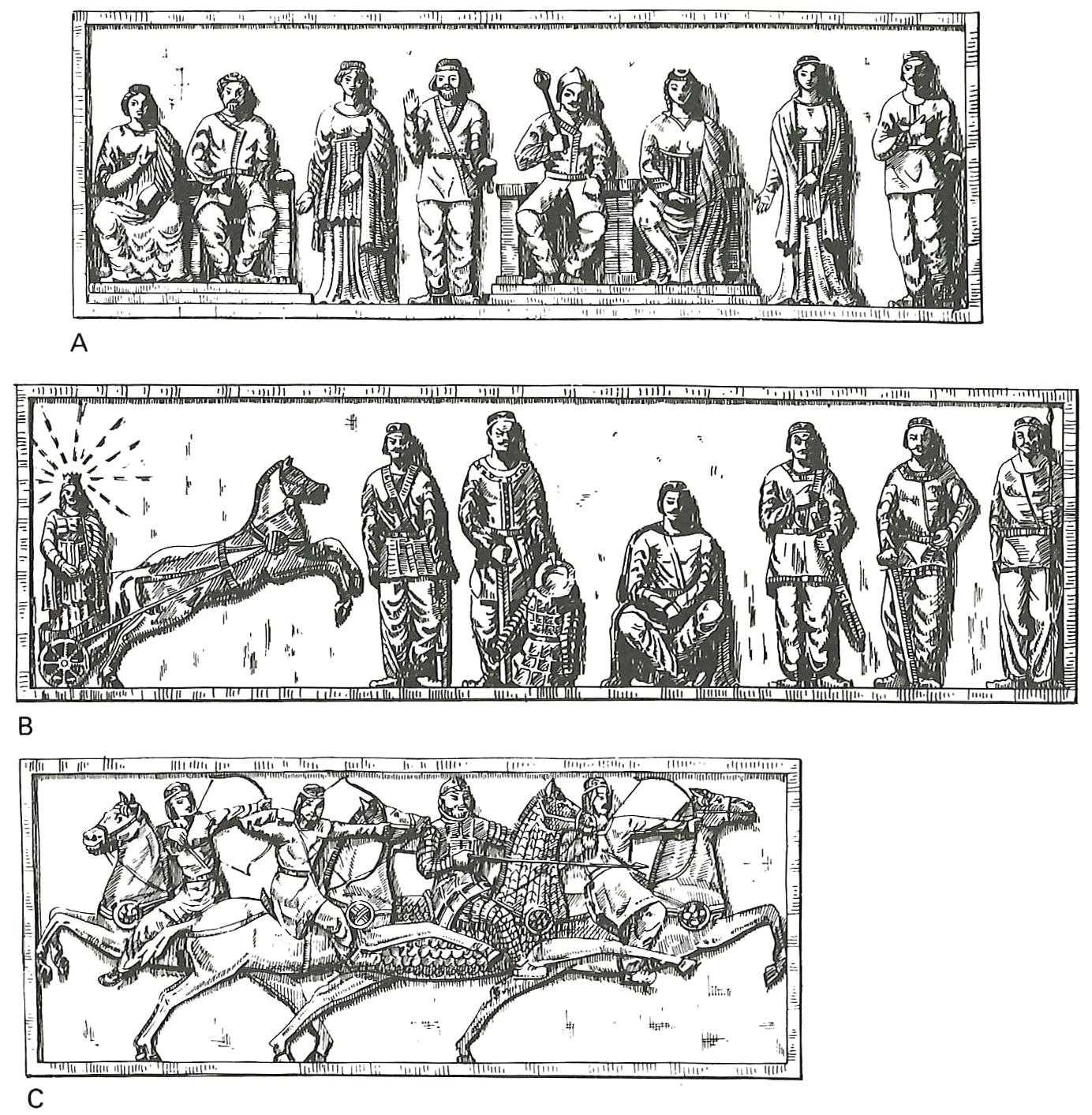Extracts from Chapter 6. 'Greek and non-Greek Interaction in the Art and Architecture of the Hellenistic East' by Malcolm Colledge, in
Hellenism In The East, edited by Amélie Kuhrt and Susan Sherwin-White
Khaltchayan (Халчаян) Reception Hall, 50 BC-50 AD
pp. 159-160

